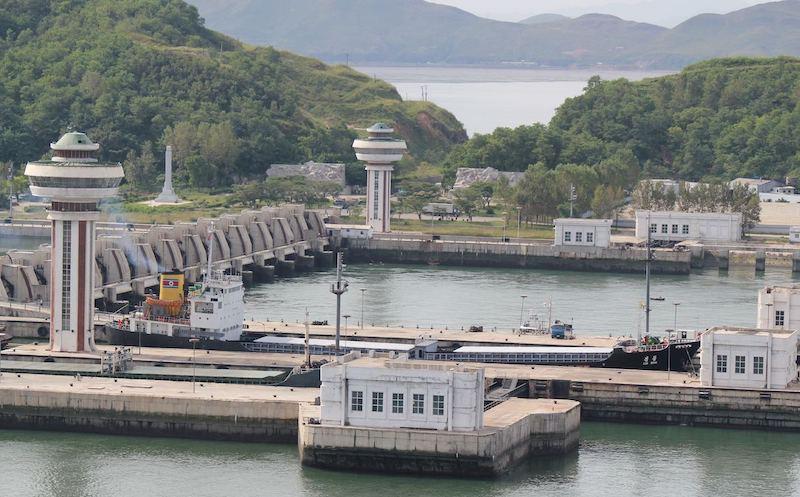North Korea (DPRK) - 남포 항

Nampo, North Korea’s principal port, holds a strategic position at the mouth of the Taedong River on the country’s west coast, approximately 55 kilometers southwest of the capital, Pyongyang. Frozen during the winter, it stands as a crucial hub for both commercial activities and the thriving local fishing industry, contributing significantly to the city’s economic backbone. Notably, Nampo serves as North Korea’s primary container terminal and plays a pivotal role in facilitating aid delivery to the country. The port area has witnessed substantial growth, fostering the development of various local industrial bases, including fisheries, and houses a critical oil terminal.
Evolution of the City: From Chinnampo to Nampo
Originally named after a fishing village in the Samhwa-hyon area of South Pyongan Province, the city underwent a transformation during the Japanese occupation when it was renamed Chinnampo. This change, marked by the addition of the character ‘鎭,’ commemorated Japan’s successful landing in Nampo during the First Sino-Japanese War. However, after liberation, the city promptly reverted to its original name, shedding the vestiges of colonial influence.
Transportation Network and Unique Container Handling at Nampo Port
The greater Nampo area boasts a dense railway network, serviced by various lines such as P’yŏngnam, Ryonggang, Sŏhaekammun, Posan, Nampohang, and Taean. Unlike most ports, Nampo has a distinctive container handling approach. Instead of transporting the containers after offloading, the contents are extracted and transported by cargo trucks, while the containers remain at the port, awaiting future shipments.
Recent Developments and Expanding Petroleum Storage
Recent commercial satellite imagery of Nampho Port reveals ongoing expansions, particularly in the petroleum, oil, and lubricant (POL) storage area. The construction of three new, larger storage tanks signifies a continuous effort to enhance the port’s capacity for importing oil and petroleum. Despite facing challenges such as sanctions and the impact of COVID-19, Nampho Port remains a critical import point for these essential commodities, showcasing resilience and adaptability.
Major Industries and Economic Impact at Nampo Port
Nampo is a hub for significant industries, including shipbuilding, steel production, and vehicle manufacturing. Products from these sectors are exported through the port, contributing to North Korea’s economic development. Notably, a joint venture between North and South Korea operates in Nampo, producing and processing clothing for export. The city’s economic progress is further evident in the construction of an 8 km long dike with three lock chambers at the port, allowing the passage of ships up to 50,000 DWT. Additionally, Nampo serves as the center of North Korea’s shipbuilding industry, housing key establishments such as the Nampo Fishery Complex, Nampo Smelter Complex, and Nampo Glass Corporation.
